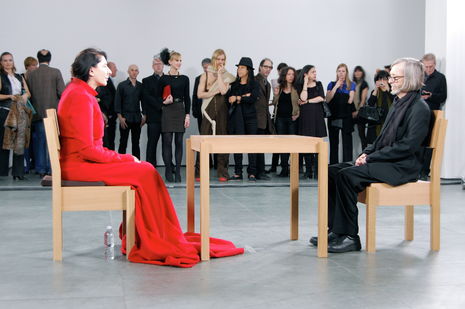Mixed mediums: the future of art?
Ella Campbell examines the latest work by experimental artist Marina Abramovic, mixing technology and reality, and asks whether Abramovic has found a new artistic medium, or a pricey gimmick

Marina Abramovic, the Serbian conceptual and performance artist known for her testing of the body, mind and relationship between artist and viewer, continues to break boundaries as she becomes the artist of the ‘first mixed reality work presented at auction’
The Life was first shown in February of this year, at London’s Serpentine Galleries: special headsets were handed to viewers, presenting them with a 19-minute long hologram of the artist, seen pacing around a roped-off five-metre circle. The work pushes the boundaries of the new technology available to artists. Abramovic explores the boundaries of time, the physical nature of connection and the concept of immortality in her effort to create a moment that can exist in time – and seemingly physical space – long after she, or anyone who knows her, is gone.
“Blurring the boundaries of what constitutes art, and the processes and materials this encompasses, opens the gates which have been previously closed”
The mixed reality performance is certainly a diversion from her previous works, which have explored human connection so palpably, to the point of near intrusion; they have inspired her audience to consider the ways we interact with one another, codes of behaviour and our social instincts. One of her most famous works, The artist is present, performed at the Museum of Modern Art in 2010, had Ambramovic sitting motionless in a chair for a total of 700 hours, over three months, while members of the public could come and sit opposite her, sharing a private ‘mutual gaze’ with the artist. The experience moved many to tears, as Ambramovic sought to engage with the experience of human connection between strangers, and how these moments can alter our perception of time.
The artist is notably not present in this artwork, but her exploration of human connection and engagement in a physical absence, and the boundaries and limitations of technology have become eerily relevant since the work was first shown. Human connection and social engagement have moved largely online as we strive to stay connected to our loved ones in a socially distant world, and many of us, especially students, have found the shift lacking. Granted, there is certainly a difference between a mixed reality performance and a Panopto lecture or Zoom social, but there seems to be a mutual feeling across the country as we hole up for another lockdown: that virtual interaction is not enough. The experience of human interaction, eye contact, simply sharing physical space with other human beings feels dramatised now in a way which makes the moments between Marina and her viewer in The artist is present more conceivable. However, it makes me wonder if The Life would leave me wanting and vacant, where Abramovic’s earlier work seems intent on exposure and vulnerability. As impressive as the advancements of technology are, I wonder if work that seems so devoid of human intervention can touch our sense of humanity in the way we hope that art would?
Yet maybe the growing intersections between art and technology are merely a reflection of the modern human experience, especially since life seems to have moved online. To expect art not to evolve with us is to reject the nature of art as an expression of human development and is to be willfully blind to the world we live in.
There is also an argument to be made that art that moves into technology and engages with the materials we use in our everyday lives makes art, and the art world, more accessible, especially when access to an iphone is more universal than access to oil-paints. The western History of Art with its grandmasters and academies has produced countless works of beauty, but also by nature restricts its access to the generally wealthy male elite. Blurring the boundaries of what constitutes art, and the processes and materials this encompasses, opens the gates which have been previously closed and helps to mould visual culture into something reflective of the world we live in, rather than who owns it.
It’s not, however, a one-sided argument. Ambramovic did not film and produce her mixed-reality performance on an iphone 11 and, ultimately, the bidding at Christies for The Life was set at £800,000. That slice of connection and immortality – a piece of the artist in time – becomes a commodity which is only really accessible to people with the disposable income to drop hundreds of thousands of pounds on the exclusivity of owning the ‘first mixed-reality work’. The blurring of the boundaries between life and art is reflective of human nature and the way artists are pushing the boundaries of expression. However, with a still flourishing art market, which rakes in over a billion pounds a year in the UK, it is worth considering whether these innovations widen access and push limits of human innovation, or simply push the limits of what we are willing to sell.
 News / SU reluctantly registers controversial women’s soc18 December 2025
News / SU reluctantly registers controversial women’s soc18 December 2025 News / CUP announces funding scheme for under-represented academics19 December 2025
News / CUP announces funding scheme for under-represented academics19 December 2025 Features / Should I stay or should I go? Cambridge students and alumni reflect on how their memories stay with them15 December 2025
Features / Should I stay or should I go? Cambridge students and alumni reflect on how their memories stay with them15 December 2025 News / Cambridge welcomes UK rejoining the Erasmus scheme20 December 2025
News / Cambridge welcomes UK rejoining the Erasmus scheme20 December 2025 Fashion / The art of the formal outfit 18 December 2025
Fashion / The art of the formal outfit 18 December 2025










